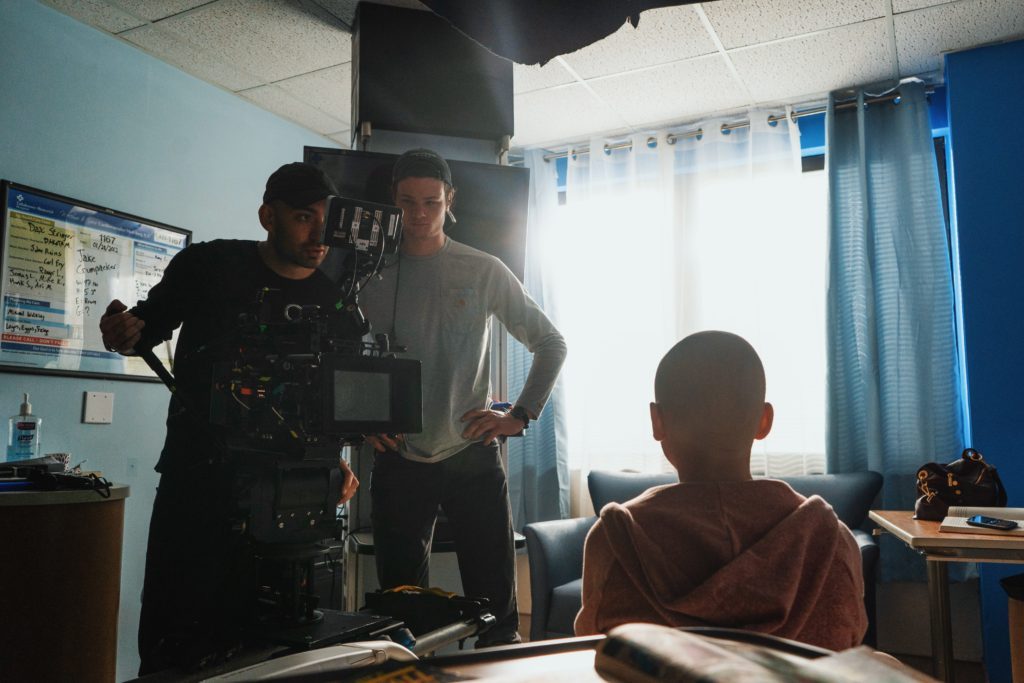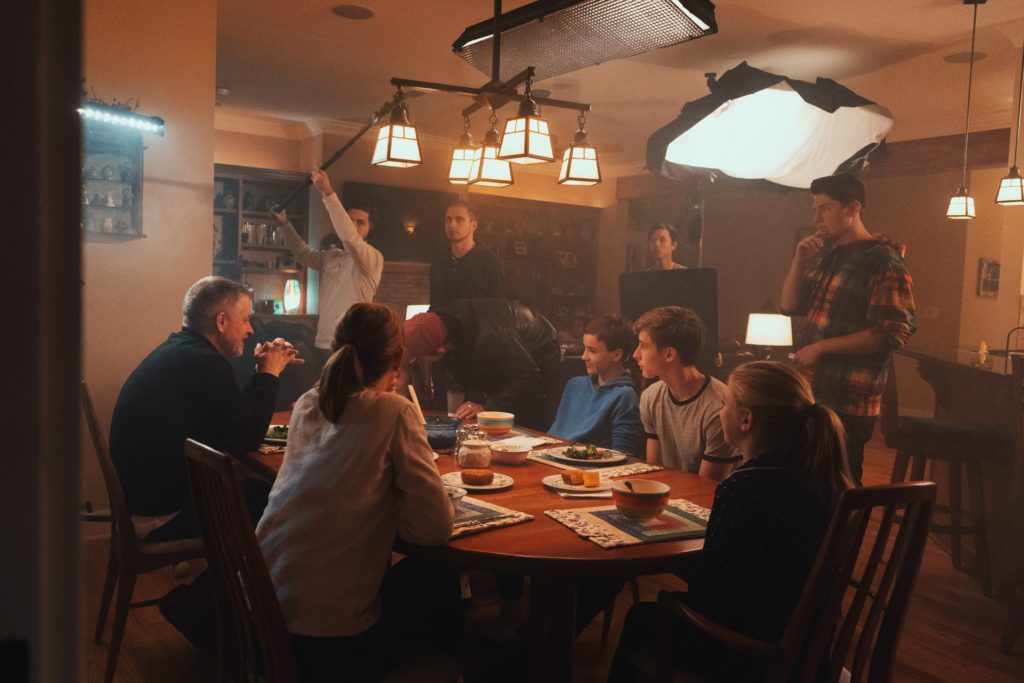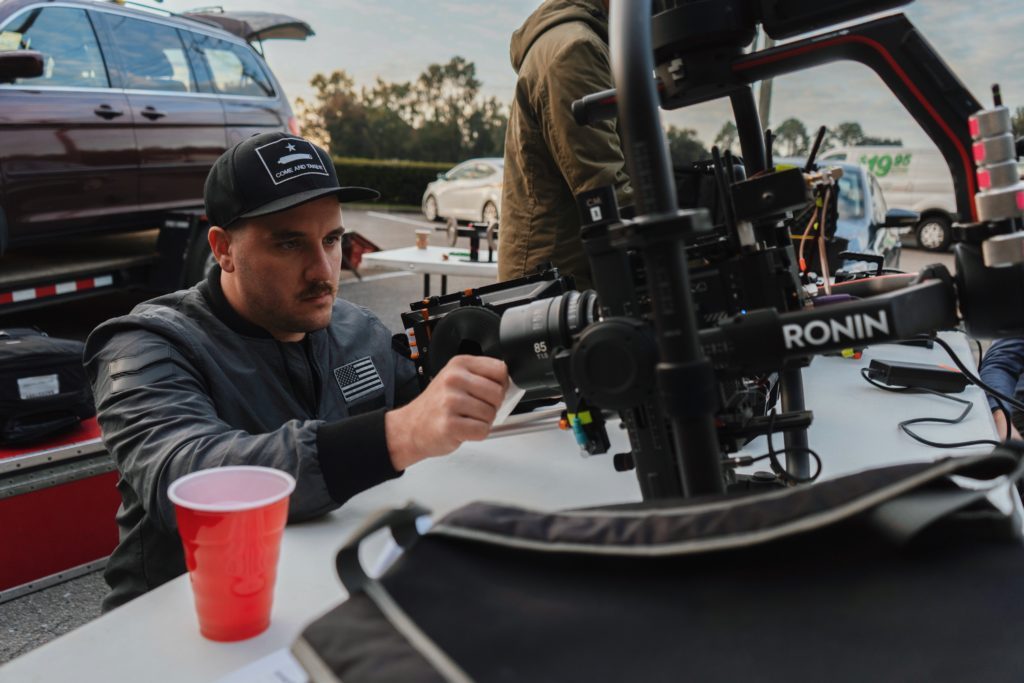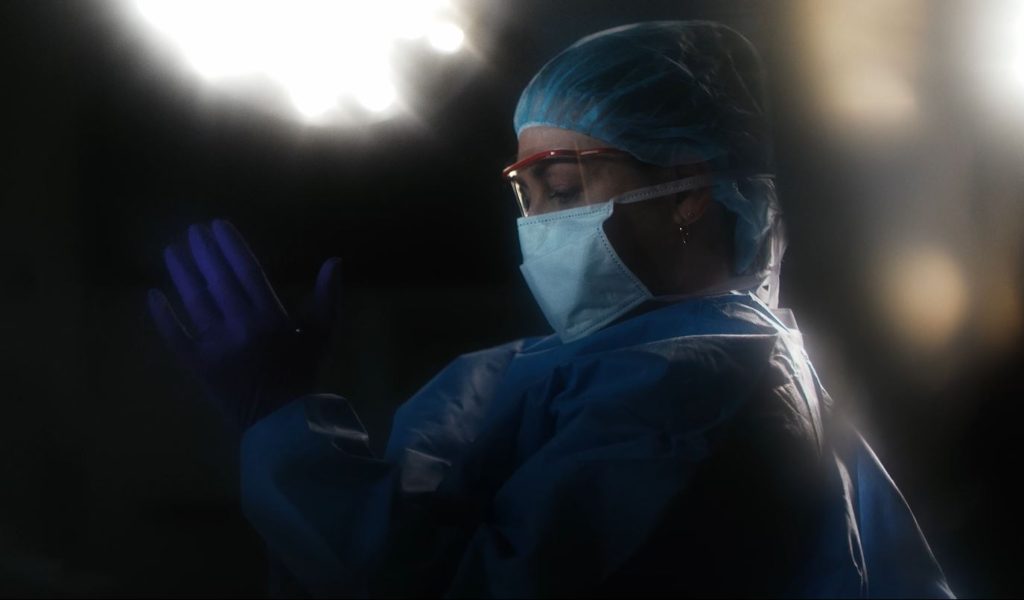When telling the true story of your brother fighting the battle of cancer, how does a filmmaker navigate the intimacies of that emotional journey while also inspiring hope in those that witness it? We had the chance to sit down with filmmaker Corey Crumpacker and Director of Photography Mike Kozlenko as they explore their process of creating the film White Fire.
Watch the full behind the scenes experience at the end of the article

Check out where you can stream White Fire now
The Telling of White Fire
CC: I’m Corey, I’m a writer/director/musician based out of Austin, TX. I’ve been professionally writing, directing and editing for the last five years working on brand films, commercials, music videos, documentaries, the whole gambit.
MK: My name is Mike Kozlenko and I’m a freelance Director of Photography based in Austin, TX. I work on commercials, branded content, documentaries, and the occasional narrative film.
- Why did you want to pursue this story?
CC: When I was in high school and my brother was diagnosed with cancer my coping mechanism was to pick up a camera and start filming. That footage turned into a little documentary that ended up in front of some relatively large audiences for a high school and college kid, and I was able to see how the story impacted people. I knew I wanted to revisit that story on a personal level for many reasons, but there was a part of me that wanted to make a film celebrating my brother and family. We also partnered with organizations around the country, including Children’s Miracle Network, to help tell the story of what they’re fighting for.
MK: When I first heard about the project, I knew this was an amazing opportunity for me to help bring to life a story that can make a difference in the world. We’ve all been impacted by cancer in some way, and getting a chance to help make a film that can bring hope to children going through something like this was a big motivation to hop on board.
On the filmmaking side, it was an awesome challenge because the film had a tremendous amount of various shooting scenarios: day interiors & exteriors, night interiors & exteriors, hospitals, houses, dream sequences, cross country races, etc. Even though the runtime of the film was 32 minutes, we’ve always looked at this project like a feature film, and it was an incredible learning experience.
- Corey, this project was obviously very personal for you, how did you navigate telling a personal story that connected with people outside of your situation?
CC: It was cathartic to be able to look at my life, particularly a pretty traumatic situation, through a third-person perspective. From the beginning, specifically through the writing and casting process, it was important to me that this wasn’t about perfectly recreating a replica of my family’s story. I had been exposed to many different kids and families over the years with their own experiences with childhood cancer.
The guiding light was my brother’s story, but I focused in on the universal experiences that everyone who has been through this knows; the growing sense of dread, having to break the news to your child, getting test after test after test, a kid’s first twenty four hours of chemo, the endless needles, etc. People who have lived it understand that intimately and people who haven’t hopefully get a lens into these kid’s reality, all while being anchored in the spirit of family.
- What was the most difficult aspect about telling this story?
CC: I feel like most indie filmmakers have a similar answer, but the constant compromise between ambition and reality is a never-ending battle. Making a film at this scope with less than a fraction of the needed budget requires you and your team to far outperform traditional roles. Luckily, the entire team and community were superheroes throughout the entire process. Plus, our producer probably slept five hours the whole twelve-day shoot. You learn something new from each project, and my takeaway from this one is that a director’s job on a shoot like this is to control the compromises in real time without losing the heart of each scene.
MK: While we did a tremendous amount of pre-production on this, we had tons of last minute, and even last-second surprises every single day of the shoot. We would finish shooting a 12 hour day, and then chat for 6-8 hours with our 1st AD to figure out how to manage the next major curveball that would be thrown our way. It was the ultimate exercise in adaptability.

The Filmmaking Process
- What was your camera rig set up?
MK: Our A-cam was a Red Gemini and B-cam was a Red Helium. We shot single camera about 80% of the time. We had lots of different camera builds & configurations throughout production. We’d be on sticks/dolly, overhead rigs, hospital bed rigs, gimbal and steadicam. Sigma also supplied us with their Full Frame 5 Prime Cine Set which included the 20mm T1.5, 24mm T1.5, 35mm T1.5, 50mm T1.5, and the 85mm T1.5
- How did you first hear about Sigma Cine lenses?
MK: I’ve been shooting on Sigma lenses for years, starting with the photo lenses for doc work earlier in my career. Then I started using the cine glass for some branded & commercial work when I wanted a crisp, sharp look, which is actually my preferred way of shooting.
- Was there a style or emotion these lenses were able to create for you?
MK: In pre-production we discussed having a vibrant & crisp look. So I knew that modern lenses would be the way to go. An important variable was the vast amount of shooting scenarios we’d face: day interiors & exteriors, night interiors & exteriors, hospitals, schools, woods, cars, etc. The film called for imagery ranging from naturalistic to heavily stylized, and with the schedule, those scenes were often back to back!
The Sigma Cine lenses not only gave us that sharp, saturated image we were going for, but their clean aesthetic allowed me to go into a scene with a blank, neutral slate and dial in how much “look” I wanted. I was able to have full control of the image, never having to fight against the lenses. 80% of the time I used a ⅛ black pro mist filter in front of the lens to infuse some heightened reality and make the highlights look more dreamlike. The Sigma Cine lenses allowed me to do this while still retaining the crisp qualities we were after.
The versatility of the lenses were also a massive life-saver on set. We had so many camera rigs, from handheld, to steadicam, to gimbal, to overheads, to hospital bed rigs, etc. With the Sigmas being lightweight, it helped make those transitions smoother. They also cover large format, which is great. We were shooting on a Gemini, which has a sensor size in between super 35 and full frame. I wanted to shoot the full height of the sensor to have the ability to adjust our 2.39 crop in post if needed. It was really nice not having to worry about vignetting.
Having the fast T1.5 iris was also incredibly useful because, like any low-budget film, there were situations where we didn’t have the time to finesse every part of the shot. Being able to shoot wide open while maintaining a sharp image helped us hide a lot of things when we were up against the clock (especially when working with the challenges of child actors’ schedules).

- It’s difficult to make a hospital feel warm and comforting, can you expand on how you were able to accomplish this and the significance?
CC:Other cancer and medical films seemed to anchor their visuals in sterility and cold, foreign environments. That’s clearly an immersive approach and leaves you with very specific feelings. You get to feel the gritty reality, seeing it as if you were there. Our goal was the opposite; we didn’t want it to look like what you would see with your own eyes. We wanted it to see this story through the eyes of a child who never loses his innocence and sense of wonder with the world. The film is a coming-of-age story and I felt like we should visually treat this as our characters’ personal ‘myth.’ The space needed to reflect that feeling of safety and unshakable trust in his parents.
MK:To visually reflect Jake’s childlike wonder, it was important that we used rich & vibrant tones to emphasize a “heightened reality.” I would try to visualize what the space would look like on an average day and then elevate it a bit beyond what would be “natural.” Throughout the film, there’s little pockets of very stylized imagery sandwiched in between scenes with a more natural aesthetic
In practice, sometimes this meant playing with extremes of color & using hard light paired with haze. For example, in the scene where Jake is riding on his chemo pump shooting a nerf gun, we wanted it to feel like a comic book . We used warm sunlight paired with a deep, unmotivated blue background light. The idea was to portray how Jake saw the world when he was having fun. (Side note: we had to use almost every single light on the truck for that scene!)

Earlier in the film when Jake & his family showed up to the hospital for his first round of chemo, we kept our color tones more realistic, but we had a big booming backlight, which when paired with haze, almost created a spotlight on Jake inside this large hospital lobby as he has this moment of deep connection with a girl who has been going through chemotherapy. To further emphasize this moment, we used a highly sculpted key light and slow motion.
- In the film, you needed to contrast the feeling of the hospital and the surrealism of the dream sequence, how were you able to create that juxtaposition?
CC: Thematically, ‘hope versus despair’ was the north star. The backdrop of every scene was our character’s general sense of hope and fear. For that to translate we needed to take every opportunity to distill that visually. The dream sequence was one of the last to come together and definitely the most difficult to tie in, as it’s a clear genre departure from the rest of the film. By taking these familiar, safe places and looking at them through the distorting lens of fear it freed us from having to ground the look in reality.

MK: As the dream sequence needed to feel like distorted perspectives of places that were a part of Jake’s life, this pushed us to really experiment with color. We used a saturated red to illustrate an almost demonic feeling, and a deep blue to reflect cold & isolation. Those contrasting colors represented the extremes of a child’s emotions. We also used gliding steadicam shots with a bit of added life because it felt more menacing, almost like it was the point-of-view of the thing chasing Jake. The kinetic handheld camera conveyed Jake’s state of mind as he was frantically running from something he inherently felt, but could not see. In the surgery scene, we shot wide open and used Vaseline on a clear filter in front of the lens which gave us a strong bloom, especially when pointed at the surgery lights. Shooting in 48fps magnified Jake’s observations as he was teetering in & out of consciousness going into surgery.
- Where can the readers find out more about the both of you and the film?
You can learn more about the film and where it’s streaming at whitefirefilm.com.
Corey Crumpacker at coreycrumpackerfilm.com or Instagram @coreycrumpacker
Mike Kozelnko at MikeKozlenko.com or on Instagram @mikekozlenko
Production company Backstory at www.backstory.us or on Instagram @backstory.us

